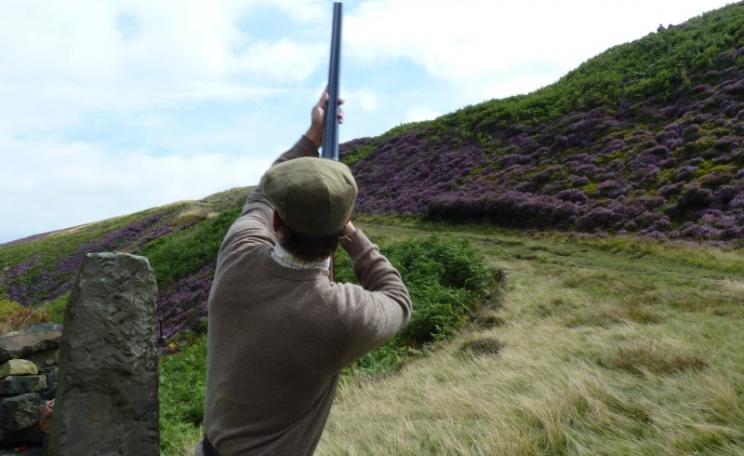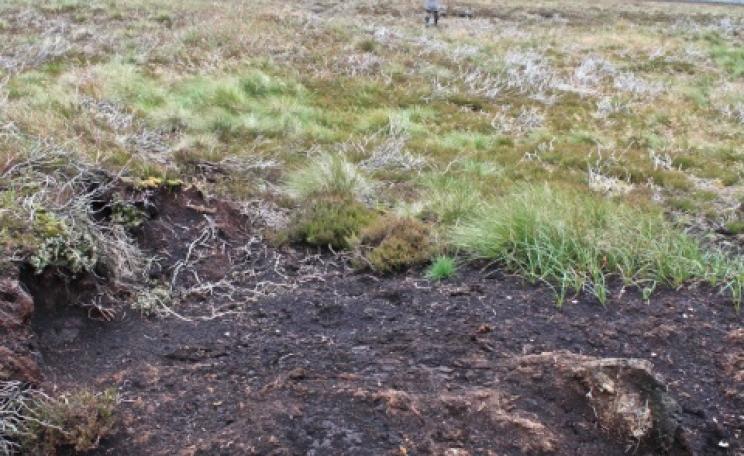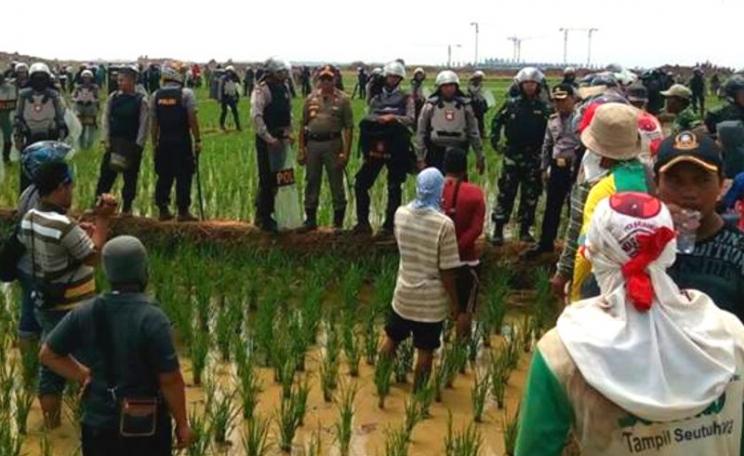The most effective way of minimising bird strikes, aside from constraining aviation growth so that skies are not so crowded, is not to build airports in or near important bird habitats and migratory flightpaths.
Aircraft share airspace with birds, so collisions, or 'bird strikes' as they're known in the trade, are inevitable. A bird strike in New York, the 'Hudson Miracle', seared the threat to aviation safety into the consciousness of air crew and passengers alike.
On 15th January 2009, Canada geese were sucked into both engines of a US Airways Airbus 320 shortly after take-off from New York's La Guardia Airport. The speed of the aircraft magnifies the force of impact of the collision and both engines lost power.
Disaster was narrowly averted by the pilot, Chesley Sullenberger, who saved the lives of all on board by successfully ditching the plane in the Hudson River.
Collisions with aircraft are almost always fatal for birds. When they are sucked into and minced up in engines the species might only be identified by DNA sequencing analysis of remains. When birds collide with the nose, wings or fuselage of a plane they leave blood smeared dents. Birds can smash through the windshield of small aircraft, leaving pilots spattered with blood.
Culling geese
Shortly after the Hudson incident New York's three main airports - JFK, La Guardia and Newark - began culling Canada geese. This escaped public attention until June 2010, when wildlife officials rounded up nearly 400 birds in Prospect Park and took them to a nearby building, where they were gassed with carbon dioxide at a lethal concentration.
Residents' shock the following day, when they found the park devoid of geese, triggered the establishment of GoosewatchNYC, a lively campaign for co-existence with urban wildlife and humane alternatives to culling.
Campaigners pointed out the futility of killing the geese. DNA testing revealed that the geese in the Hudson bird strike were not resident birds, but a migratory species which had flown south from northern Canada.
GoosewatchNYC drew attention to the carnage that would be necessary should authorities attempt to eliminate the risk of aircraft collisions with migratory birds: "In order to guarantee preventing a repeat occurrence would essentially require killing every bird on the eastern seaboard."
While not adopting such an extreme policy, authorities increased culling. By autumn 2013 geese were being rounded up from municipal properties within a 160 square kilometre area.
On 6th June 2010, a collision with geese brought down another plane. A Boeing 737 departing from Schiphol Airport, carrying six crew and 156 passengers, was seriously damaged when it struck a flock of geese. The pilot struggled with the controls when the left engine lost power and caught fire, but managed to land the safely back at Schiphol.
The most effective way of minimising bird strikes, aside from constraining aviation growth so that skies are not so crowded, is not to build airports in or near important bird habitats and migratory flightpaths.
Investigators discovered the mangled carcasses of 24 geese in the landing gear and the electronics compartment. Seven more were found dead on the runway. Geese are attracted to agricultural land around the airport, and, in 2012, 5,000 were gassed.
Bird protection groups suggested planting crops that would not attract geese, but the area where geese are deemed a hazard to aircraft was extended to cover a 20 kilometre radius around the airport, and a further 10,000 were gassed between January and July 2013.
Airport kill lists
Community opposition to bird culling in New York intensified in December 2013 when snowy owls were added to the kill list. After five bird strikes at JFK involving snowy owls, in the space of just two weeks, three were shot.
In response to an online petition urging a cease fire, that quickly garnered 63,000 signatures, the Port Authority stopped killing snowy owls and committed to adopting non-lethal alternative methods. Now, snowy owls will be trapped and relocated, the most humane option, but only feasible for managing small numbers of birds.
The first ever snowy owl to be spotted near Honolulu Airport's runways was not so lucky. Attempts to frighten it away with flares and catch it in a net failed, so a wildlife official shot it.
New York Port Authority's reprieve for snowy owls was not extended to other species. In January, it announced plans to eliminate the entire population of 2,200 wild mute swans, aside from a few to be held in captivity.
Conveniently for the airports, landowners and authorities concurred in the view that the mute swans are 'pests' - and promulgated the view that, in addition to posing a risk to airliners, the birds attack people, destroy vegetation and pollute water because their droppings contain E-coli.
GooseWatchNYC founder David Karopkin pointed out that the swans had been living in the state for almost 200 years and demanded that the 'outrageous' plan be scrapped. Within a few weeks 50,000 people had commented on the plan and the Department of Environmental Conservation (DEC) announced that it would be revised.
But airports' culling practices have exacted a heavy toll on many species of birds. In May 2014 records showed that, over a five year period, JFK Airport wildlife control officers had shot 26,000 birds.
More than 1,600 of these were from 18 protected species that airports did not have permission to kill including red-winged blackbirds, snowy egrets and American kestrels. In spite of the slaughter, the number of collisions has not declined.
To the south, in New Jersey, the picture is similar. 6,000 animals, mainly birds, have been killed in the name of air safety. Here too, the number of collisions with aircraft has not declined.
Over on the west coast, five airports in the San Francisco Bay area shot 3,000 birds in a two-year period up to May 2013, including 57 red-tailed hawks. Medium-sized birds such as gulls, ducks and hawks, and even small birds including starlings and blackbirds are also targetted, as dense flocks can being down a plane.
Worcester Airport in Massachusetts shoots small birds including swallows, horned larks and snow bunting. Sea-Tac (Seattle-Tacoma) Airport's wildlife hazard management programme involves killing 'invasive' species, including 2,000 starlings per year.
Between 1990 and 2012 bird strike investigations throughout the US identified the remains of no less than 482 species, including loons, starlings, grebes, pelicans, cormorants, herons, storks, egrets, vultures, hawks, eagles, cranes, sandpipers, pigeons, owls, turkeys and blackbirds.
But the number of bird strikes has continued to rise since the Hudson incident, reaching 9,000 in 2012. The real level is probably double this amount because airlines are not required to report minor incidences. The continued rise in bird strikes gives credence to the opinion of a number of experts, who argue that culling is ineffective, creating vacant habitats that are rapidly populated by other birds.
Shooting, poisoning
In the aftermath of the Hudson incident airports around the world adopted a hard-line approach to birds.
Lishe Airport, on China's east coast, which had previously dealt with migrating egrets, stopping to feed on nearby grassland, with gunshot sounds and capturing them in nets began spraying rat poison on the birds' food sources and shooting them.
Changi responded to the post-Hudson panic by inviting the local gun club to shoot birds including white-bellied sea eagles. Following a public outcry Changi stopped shooting birds and stepped up its efforts to keep them away, by eradicating their food sources, covering up water sources and installing 'anti-perching devices' slopes and spikes on top of buildings, and dispersing them with lasers.
Yet airport artwork appropriates avian imagery; 1,216 bronze droplets connected to motors form the world's largest 'kinetic sculpture', moving to create a hot air balloon, a kite, a flock of birds and other flight related shapes.
Outdoor artwork at Auckland Airport includes five albatross sculptures crafted from cast iron. This whimsical installation belies the airport's brutal approach to birdlife.
When the airport conducted its first black swan cull this July, 788 were shot from a helicopter. The swans had moved to the area because their habitat - lakes several kilometres away - was destroyed. Intensive agriculture, especially dairy herds, removed aquatic vegetation which served as their food source.
In Britain, red kites, distinctive birds of prey with angled wings and a forked tail were reintroduced to the Chiltern hills after being hunted almost to extinction. Sometimes they wander onto RAF Benson airfield, where a 'considerable programme of non-lethal measures' failed to prevent four collisions over the last two years. The airfield has been issued with a license to shoot red kites if there is a risk of collision with aircraft.
At least shooting kills the majority of birds quickly. At Houston's Bush Intercontinental Airport, in Houston, United Airlines poisoned hundreds of birds by laying out corn kernels laced with a toxin. The poison, a nerve agent, was not fast-acting; birds took up to an hour to die. Videos taken by airport employees showed pigeons and great-tailed grackles suffering convulsions.
Perhaps the cruellest method of destroying birdlife is the enlistment of another species, by the Beijing Air Force. Two monkeys were trained to remove birds' nests, because of concerns over millions of migratory birds flying northwards during spring. Each monkey can remove between six and eight nests a day; by May, they had removed a total of about 180.
Deterrence methods
For the most part, airports use a variety of methods to make sites inhospitable to birds and frighten them, only resorting to culling should these measures fail to keep them away. Fruit trees, grasses and other plants that attract insects and small mammals that birds feed on are removed.
Sometimes vegetation is simply replaced with asphalt. Detention ponds, built to protect the airport from flooding, are covered with netting or hollow plastic balls, have steeply sloped sides and are surrounded by quarry 'spalls' - sharp edged stones that are painful for birds to walk on. Beyond the airport boundary, water sources that birds need for drinking and food might be filled in or covered up.
After a plane collided with two peacocks Sri Lanka's new Mattala Airport in January, authorities began destroying habitats - removing vegetation and closing water holes, having recognised that culling would be met with protests. Yet, like many airports, Mattala is adorned with artwork suggesting an affinity with birdlife; on the approach road there is a giant metal sculpture of peacock.
Vancouver Airport's wildlife control programme comprises predatory falcons trained to chase them away, bright lights, strings of tinsel, patrol boats and pyrotechnic noise makers. But the airport still uses shotguns. In 2010, 1,987 birds were shot, more than double the average over the previous five years. Yet the number of bird strikes for the year, 217, was higher than the average of 189 over the previous five years.
Biotechnologists in New Zealand have come up with a more comprehensive approach to habitat management. A grass that repels birds has a 'symbiotic fungus' growing within it, which reduces the population of insects that attract birds, and makes birds sick if they ingest it, so they don't return.
Test plots at Christchurch, Auckland and Hamilton airports have reduced the number of birds by 95%, so this must surely be considered a success. However this also demonstrates that such approaches to reduce the risk of bird strikes will also impact on wider biodiversity.
A growing number of airports use avian radar to detect birds. It is effective at distances of up to 9.5 kilometres and can even identify species. But it tends to be used in conjunction with deterrence measures.
For example, Dallas/Fort Worth Airport also uses propane cannons, pyrotechnic shells fired from a handgun with a range of sounds to target different species and falcons. However this arsenal of dispersal methods is of limited effectiveness - last year planes collided with 333 birds, the main victims being doves.
Few fatalities from bird strikes
The manner in which airports are stepping up the slaughter would suggest that bird strikes are a major cause of serious air accidents. In fact, the vast majority of afflicted planes land safely. About 5,000 collisions with birds occur every year, but airliners are built to withstand the impact.
The Hudson bird strike, so alarming because an emergency landing on a runway was not possible, was a highly unusual occurrence of birds being sucked into both engines.
Furthermore, only a small proportion of bird strikes result in fatalities. Since 1988, wildlife strikes, predominantly birds but also animals wandering onto runways, have destroyed about 229 planes worldwide. More than 250 people were killed, but this is a small proportion of deaths caused by air accidents.
In 2013 alone there were 265 air crash fatalities, and that was the safest year on record. Over the last ten years the annual average was 720 fatalities. The majority of serious air accidents are caused by mechanical failure, bad weather, pilot error, or a chain of events involving one or more of these factors. More human lives could be saved by increasing efforts to address these aspects of air safety.
Keep airports away from birds!
And the most effective way of minimising bird strikes, aside from constraining aviation growth so that skies are not so crowded, is not to build airports in or near important bird habitats and migratory flightpaths.
The threat to birds and air safety is a key reason for opposing any new airports, or airport expansions, in areas important for birds. One such is Istanbul's third airport, which has already commenced on wetlands and forests to the north of the city.
Another - still at an early stage where it may be successfully combatted - is the proposed new hub airport for the UK in the Thames estuary, widely known as 'Boris Island' thanks to the strong support given to it by London Mayor Boris Johnson.
As highlighted by RSPB, which is "vehemently opposed to the construction of an airport in the Thames Estuary and that includes any and all of the latest proposals that have come forward", the proposed airport would devastate valuable - and highly protected - habitat that supports hundreds of thousands of year-round and migratory birds.
The Thames Estuary contains a Special Area of Conservation (SAC) and five Special Protection Areas (SPA), sites protected under EU law. All of the proposed airport sites conflict with one or more of them.
More information on RoseBridger.com.
Rose Bridger (@RoseKBridger) is the author of Plane Truth: Aviation's Real Impact on People and the Environment, published by Pluto Press.







